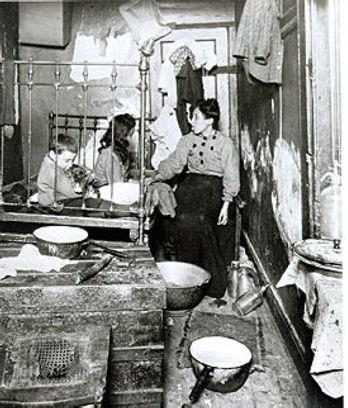
GISW
GLOBAL INSTITUTE OF SOCIAL WORK

Board of Directors and Volunteers at the GISW AGM 2016: Back row (LtoR): Terence Yow, Sim Gim Guan, Tan Ngoh Tiong, David Ong, Vicky Tan, Koh Juat Muay. Front Row: S. Vasoo, Ang Bee Lian, Arthur Tan, Elena Lui, Teo Mui Wan

CSD2015 Conference: Opening Plenary with Keynote Speaker Dr Noeleen Heyzer and Guest of Honour: DPM Tharman Shanmugaratnam

The International Federation of Social Workers is holding a competition to design the 2017 World Social Work Day Poster. The competition is open to anyone including people that use social work services, students, social workers and any one else.

Board of Directors and Volunteers at the GISW AGM 2016: Back row (LtoR): Terence Yow, Sim Gim Guan, Tan Ngoh Tiong, David Ong, Vicky Tan, Koh Juat Muay. Front Row: S. Vasoo, Ang Bee Lian, Arthur Tan, Elena Lui, Teo Mui Wan
Vision &
Mission
The vision of The Global Institute of Social Work (GISW) is to deliver quality social work training wherever in the world it is needed the most. Our goal is to provide readily available, cost-effective, and culturally appropriate training in various fields of social work.
1900-1917
Halcyon Days
The role of social work expanded during the progressive era. The hallmark of the age was the rise of a progressive coalition between urban reformers and radically minded farmers. These two groups shared a belief that government could be an instrument for improvement. That political blend eventually led to the formation of the Progressive Party during Teddy Roosevelt's 3rd party campaign for the Presidency in 1916.
Those were halcyon days for the reformers of the settlement movement. Many of them, such as Lillian Wald, Florence Kelly and Paul Kellogg, rose to national prominence. Jane Addams became one most well known figures in the nation.
The Settlements
The central feature of social work during the progressive era was the continued growth of the settlement movement. By 1900, settlement leaders identified strongly with the larger more broadly based charity movement.
Settlement leaders continued their commitment to social change and reform. In Chicago, Mary McDowall helped create the National Consumer's League and hundreds of settlement workers joined the crusade for improving conditions of women and children workers led by Frances Kelly. Mrs. Kelly also became a leader in the early women's labor movement.
In New York, settlement leaders such as Lillian Wald and Robert Hunter put social workers into public schools and promoted the idea of school-provided lunches. In some cities, settlement leaders organized anti-tenement groups and otherwise supported better housing for the poor.
Settlement leaders were strongly committed to research. However, they realized that publicizing their findings was also essential. Countless talks to clubs and organizations made many local celebrities. A few notables such as Jane Addams and Lillian Wald became national figures. They gave keynote addresses at national conferences, wrote articles in national magazines and were commonly quoted in the nation's leading newspapers.
Some of the more influential leaders developed interests in issues that extended beyond the neighborhood. An example of this type of national activity was the crusade to improve the circumstances of women and children which led to the creation of the Children’s Bureau.
Child Saving
At the turn of the century, a growing number of charity leaders were drawn to the plight of America's children. Three related problems were identified as crucial:
1. Infant and maternal mortality rates were the highest of any industrial country.
2. The growing number of orphans was overwhelming local resources. The public and private foster home and orphanage networks were overcome by the sheer number of new wards. According to welfare historian M. Katz, more than 240 new orphanages were incorporated during the 1890s and a survey in 1910 estimated that more than 100,000 children were living in orphanages across the country.
3. Millions of children were working instead of attending school and the number of working children was increasing.
Many leaders believed that private charities were the solution to these complicated problems. Others, especially those from the settlements, supported a broader approach. They championed government intervention through the creation of a national agency. Florence Kelly called for the creation of a national Children's Bureau in 1900. In 1904, she along with Lillian Wald and Edward Devine met with President Theodore Roosevelt and secured his endorsement of a national Children's Bureau. This bill was introduced in Congress in 1906 ,but opponents supporting industrial interests were successful in getting the legislation tabled.
In 1909, one of President Roosevelt’s personal friends,James West, began organizing for a White House Conference on Children. An orphan himself , West was a long-time defender of dependent children. With the support of prominent social workers such as Lillian Wald, Florence Kelly and Homer Folks, they brought together more than two hundred leaders from communities throughout America. The resulting publicity put child welfare on the national agenda and generated enough political pressure to force the creation of the Children's Bureau in 1912.

"New York in 1911" by George Bellows

Drawing of Steel Workers taken from the Pittsburgh Survey

"Why don't they all go to the country for vacation?" George Bellows

Poor families found challenges even in the simple bath

A tenement family
Adapted from socialworkhistorystation.org
Special thanks to the late Professor Dan Huff and Boise State University School of Social Work